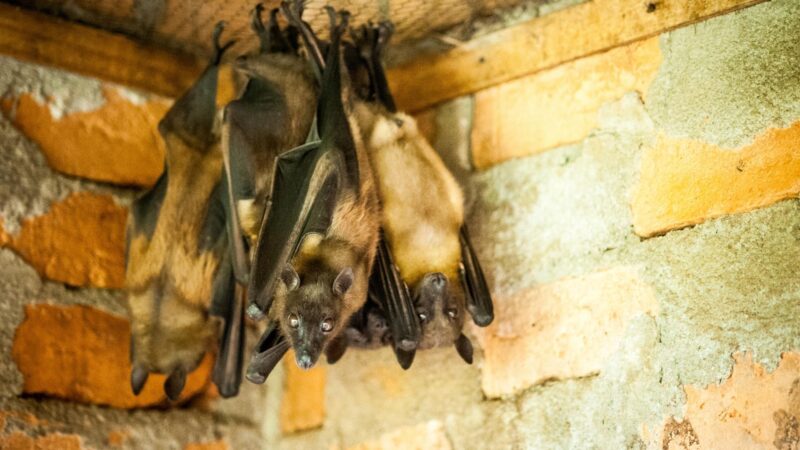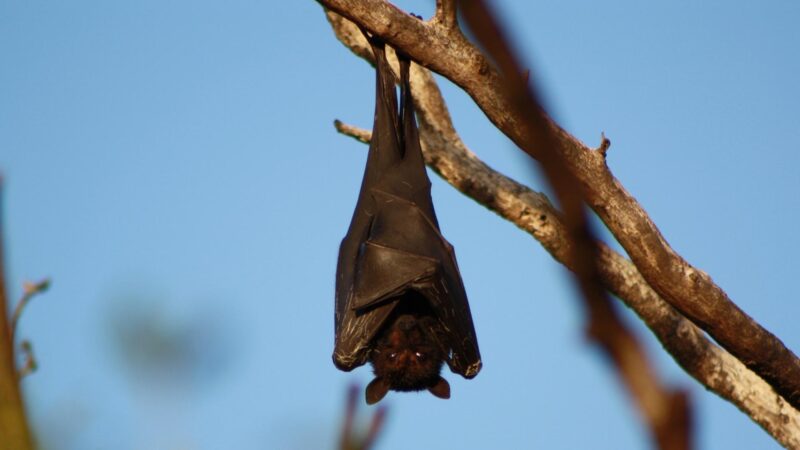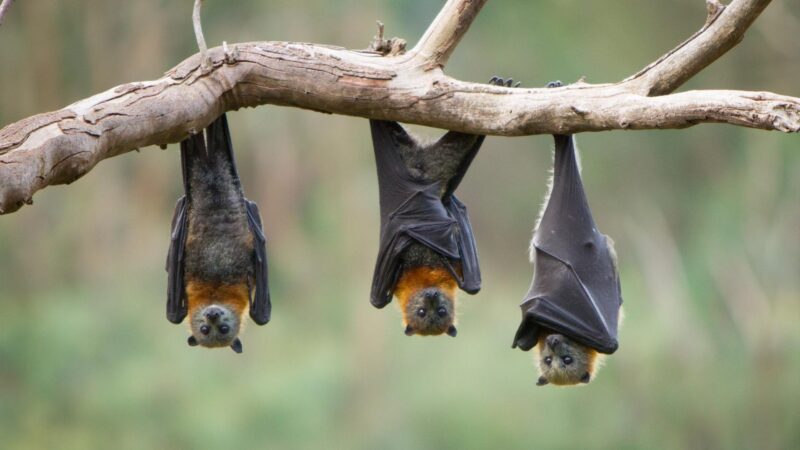Bats help a lot in controlling garden pests and are great seed spreaders. But despite being very beneficial to the environment, they can also be nuisance pests.
Contrary to common belief, bats don’t suck human blood. However, their presence indoors or around your home can lead to some infectious diseases.
How to get rid of bats inside and outside your house? Once indoors, bats can be evicted by using bat repellents such as bright light and strong scents. But still, you should avoid harming or killing them. Once outdoors, you may ignore them if they are not causing a health risk. You can also provide them with a bat house.
Bats are considered accidental travelers, and they tend to avoid humans. There are more than 1,400 bat species around the world, but one of the most common house bats is the little brown bat (Myotis lucifugus).
If there are bats inside your house or around your home, this article can help you with how to deal with them.
Table of Contents
What Attracts Bats Into Your House?

Generally speaking, bats prefer caves over houses. Nevertheless, a lone young bat may accidentally enter homes while trying to escape from predators. Meanwhile, pregnant bats enter a house to find a comfortable shelter.
Then, they will build a nest in the attic, where they can give birth and raise their young.
Bats may also enter homes during winter to hibernate. Also called “torpor,” the hibernation period of bats means they are inactive for only a short time.
During this state, bats reduce their metabolism but will occasionally be awake to fly around. This is to adjust their body temperature according to the temperature of their surroundings.
Bats are very attracted to moths, mosquitoes, house crickets, and beetles since their main diet is night-flying insects. Some bat species are frugivores, which means that they feed on raw fruits. So, if there is an insect infestation in your house or you are keeping lots of fruits, chances are bats will enter your home.
What Do Bats Hate the Most?
Bats hate light the most. These flying mammals are nocturnal, which means they are most active at night. Since their vision is well adapted to darkness, they can hardly see their surroundings once there is bright light. During this scenario, bats find it hard to adjust their eyes to brightness, which affects their normal activities.
Related: How to Tell if You Have Bats in Your Attic? | A Detailed Guide
What Is the Natural Enemy of the Bat?

Bats have some natural predators, such as snakes and huge birds. However, the natural enemy of bats is a fungal disease called white-nose syndrome (WNS).
In fact, millions of hibernating bats in 37 states and 7 provinces in Canada have already died since the winter of 2007 due to this deadly disease, as of March 2021.
Considered one of the worst wildlife diseases in America, WNS is caused by the white fungus, Pseudogymnoascus destructans (Pd). This leads to an infection on the wings, skin, and muzzles of bats during the hibernation period.
As of this time, there is still no proven cure for WNS and no preventive measures against it.
What Animal Kills Bats?
There are various kinds of animals that will kill bats. This includes owls, hawks, falcons, snakes, crocodiles, raccoons, weasels, cats, and spiders.
Most birds of prey are fast flyers and have excellent eyesight, and can easily catch bats in flight. Bats are also being captured while they are roosting or flying very low.
Note that bats have a very wide wingspan, which makes them more vulnerable as prey. On the other hand, cats and other bat-eating mammals can also carefully climb to the roost and quickly grab the bats.
This usually happens during the day, while the bats are hanging upside down and sleeping in groups.
Can I Get Rid of Bats on My Own?

You can get rid of bats on your own, depending on the severity of the problem. If only one bat is flying inside your house, simply open the windows and other possible exit points so that the bat can escape peacefully.
But if there are already lots of bats in your house, excluding them alone is very difficult.
Also called guano, bat poop can accumulate in the attic over time. Inhaling the spores found in bat droppings can cause the respiratory disease, Histoplasmosis.
Cleaning lots of bat poop alone means you are more exposed to this illness. Histoplasmosis can also be acquired through soil that is contaminated with bat droppings.
What Is the Easiest Way to Get Rid of Bats?
So far, the easiest way to get rid of bats is to keep the lights on and give them space, and they will leave on their own. However, this trick is not applicable if the weather outside is too cold.
Otherwise, they will not leave. Also, if baby bats (pups) are present, getting rid of their mother will cause them to die of starvation.
What Will Repel Bats?
Since killing bats is illegal, the most humane way of getting rid of them is to drive them away. But again, timing is very important. Don’t scare adult bats away if there are young bats that still could not fly with them.
If you are sure that no baby bats will be left inside, here are some effective bat repellents that you can try.
1. Bright Lights
As mentioned earlier, bats cannot perform their normal activities if there are bright lights. While they may sometimes go near the street lights, it is because their food insects are attracted to light.
So, if there are bats in your attic, turn on the lights. For more effective results, use 150-watt bulbs to illuminate the entire area.
2. Mirrors or Aluminum Foil
Once the lights in the attic or roost area are on, put some mirrors. This will cause some light reflections, which will repel bats even more. Bats will be blinded by the excessive brightness, which will force them to leave as soon as possible. If you don’t have big mirrors, hang some aluminum foils, which also create reflection.
3. Electric Fans
Putting too much light is an electrical hazard and can cause a fire. If you don’t want to put too many light bulbs in your attic, you may install electric fans. Bats prefer warm climates and are disturbed when the temperature is cool.
Fans will create air drafts that will repel bats effectively. Just make sure they will not overheat.
4. Mothballs
Mothballs contain high concentrations of naphthalene, a fumigant insecticide that is registered as a bat repellent. But because the strong smell of mothballs dissipates quickly, this means that you have to replace them regularly. Mothballs are also dangerous to human health, so be very careful when handling them.
5. Strong Scents
Bats are known for having a very sensitive smell, and they hate the strong smells of garlic and onion. They also hate the scent of essential oils such as cinnamon, clove, eucalyptus, mint, menthol, peppermint, and spearmint. You can also try ready-to-use bat repellents such as Bonide Repellent Bat Magic.
Are Bats Hard to Get Rid Of?
Unfortunately, bats are hard to get rid of. First of all, it is illegal to trap or kill bats in the United States unless they pose health risks to humans.
Most bat species are listed as endangered and are protected by state and federal laws. This is the main reason why getting rid of bats can be very challenging.
Aside from that, bats can be aggressive towards humans in self-defense. They don’t usually attack people, but they will not hesitate to bite or scratch you once you provoke or try to hurt them.
Although most bats are not rabies carriers, touching them with bare hands can still potentially be infected with the disease.
How to Get Rid of Bats Indoors?
Although the bat repellents mentioned above are effective, some of them may only be temporary, and you need to apply them repeatedly. If there are already lots of bats in your house, forcing them to get out can be very challenging.
So far, the exclusion is the best way to get rid of bats indoors. Below are some useful tips:
- Inspect the attic and other possible areas where bats love to stay. If you cannot find any bats, you may smell or spot some bat droppings.
- Check for all possible access points of bats, including cracks and holes that are 1/2 inch in diameter. Bats can easily enter holes bigger than this size.
- Caulk or seal them properly, except the one that bats commonly use at night when they hunt for food.
- For the chimney top and similar openings, install 1/4-inch wire mesh. Bats cannot chew through wires.
- For cracks and crevices, use a reliable sealant such as Gorilla White 100% Silicone Sealant Caulk.
- Install a one-way door on their main exit point so they can go out but can never enter again. If you cannot make one, this dependable and reusable Batcone II Reusable Bat Exclusion is a great alternative.
The best time of the year to make your house bat-proof is usually March or the early spring. This is the season when they are likely to leave. But again, you should make sure that there are no baby bats that cannot fly yet.
Aside from being inhumane to leave them to die, their dead bodies will attract insect pests.
How to Get Rid of Bats Outdoors?
If bats cannot enter your house, they are likely to roost in your barn. They may also hang under the porch eaves or in trees around your house. Although bats are unlikely to cause trouble outdoors, they can still pose health risks.
If you have bats around your house, here are some tips on how to get rid of them outdoors:
- Attract natural predators of bats such as owls and other birds of prey.
- Install lights outdoors, and leave them on every night.
- Install hardware cloth around your property, especially if you have fruit trees.
- Alternatively, use a 1/2-inch polypropylene bird netting such as Bird-X Structural Bird Netting.
How Do I Keep Bats Away From My House?
So far, the best way to keep bats away from your house is to provide them with their own house or a bat house. Instead of attaching it to your house, mount it in trees, where pets and children don’t usually visit.
This is to avoid them from getting into contact with bat droppings or sick bats that might fall from the bat house.
Unlike bird houses, bat houses are very narrow since bats prefer tight spaces. They are usually made of light wood and are around 1/2 to 1 inch wide.
Bat houses should be placed at least 15 feet above the ground and in warm areas or facing the morning sun. If you cannot make one, Kenley Bat House is an ideal option.
How Long Does It Take To Get Rid of Bats?

Getting rid of bats depends on several factors. If there are baby bats, wait until they can fly with their mother. This usually takes several months after they are born.
You should not also drive bats away during winter because they will likely die outside. But during active seasons, bat eviction may only take a few days.
Summary
Bats may look scary because they are usually associated with death. But in reality, these flying mammals provide great benefits to our ecosystem. As humans, we should live in harmony with them.
If you encounter bats inside or outside your home and they are not bothering you, treat them humanely.
List of Sources
A Homeowner’s Guide to Northeastern Bats and Bat Problems